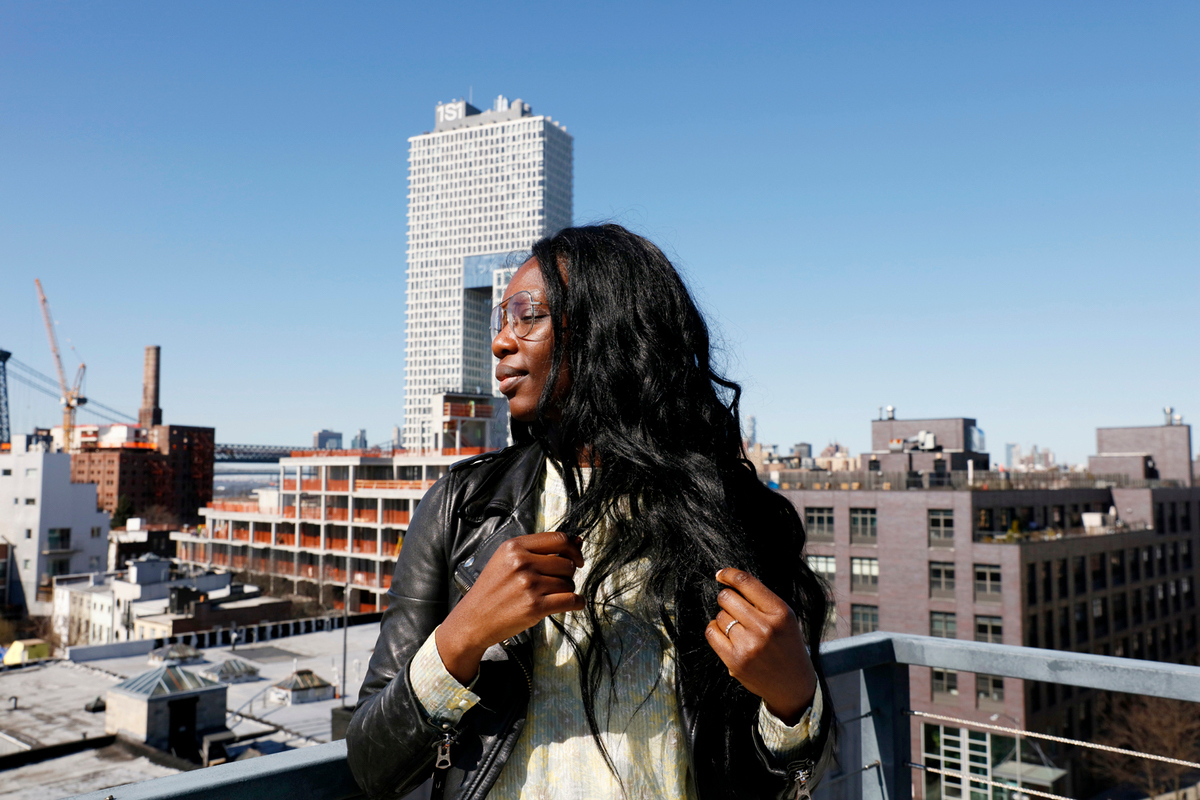Tired of Being Tired? A Doctor Shares the (Surprisingly) Easy Solutions for Beating Fatigue
Natural remedies, right this way. The post Tired of Being Tired? A Doctor Shares the (Surprisingly) Easy Solutions for Beating Fatigue appeared first on Camille Styles.

The poet T.S. Eliot and I have something in common. I, too, have measured my life with coffee spoons. A quick glance at my morning routine and you’d be shocked to know that I’m (not-so-secretly) on the hunt for natural remedies for fatigue. Something tells me, you’re after the answers, too.
Regardless of my effort to hydrate with more H20 than espresso and prep high-protein snacks, I begin to feel the sleepy-eyed slump creep in every afternoon. TBH, it makes me envious of children’s nap time. (If there was a cot nearby, I’d be curled up like a purring cat.) Siesta. Forever.
Even though I find a way to power through with a handful of almonds, a blast of the AC, a twirl around my kitchen to the buoyant beat of Harry Styles (or, yes, another shot of caffeine adrenaline), this tiresome cycle is just that: tiresome.
Featured image from our interview with Marie Kouadio Amouzame by Belathée Photography.
Meet the Expert
And yet by bedtime, I’m suddenly wide awake with far too much energy for my pillow to absorb. Perhaps caffeine is the culprit, which leads to way too much past-midnight scrolling. But there never seems to be the right amount of rest, even on a relaxing Sunday, to get my slumber-to-slog situation in check.
Since surely life should be more than moving from one mug to the next, I called up my functional medicine physician, Dr. Alex Carrasco, MD of Nourish Medicine to have her shed a bit of light on the subject of fatigue. After flipping through the pages of her brilliant book Bloom: 7 Steps to Reclaim Your Health, Cultivate Your Desires & Reignite Your Spark, I sat down with her to go a bit deeper.
Ahead, Dr. Carrasco shares the ins and outs of fatigue—why it develops, how it impacts our health, and key strategies for keeping your energy high all throughout the day.
1 of 4
Common Causes of Fatigue
In our hyper-connected, mile-a-minute world, it comes as no surprise that many of us are experiencing the telltale signs of fatigue. Dr. Carrasco notes that fatigue “is an often-dismissed symptom that demands greater evaluation and should not be assumed to be benign.” Fatigue impacts us not only physiologically, but, as she puts it, comes with a range of psychosocial consequences that are associated with or can lead to “poor long-term quality of life.”
Just as the impacts of fatigue on our lives vary, so do the reasons it develops in the first place. The following are the top reasons Dr. Carrasco says that her patients present fatigue in her practice.
Nutrient deficiencies Thyroid disease Autoimmune disease Chronic dehydration Blood sugar dysregulation Food sensitivities Chronic infections Chronic inflammation Chronic stress Poor sleep 2 of 4
Natural Remedies for Fatigue
There are habits, practices, rituals, and other natural remedies for fatigue that we can start to incorporate into our routines for guaranteed, sustained energy all throughout the day—every day. Dr. Carrasco shares her go-to natural remedies for fatigue below.
Move Your Body
I know: no matter what time of day, if you’re feeling exhausted, exercise is probably the last on your list of to-do’s. But Dr. Carrasco encourages those experiencing fatigue to lean into the movement practices that feel supportive, empowering, and intuitive. Whether it’s stepping outside for a quick walk on your lunch break, strength training at the gym, or booking a Pilates class with a friend, she recommends that her patients prioritize 150 minutes of movement each week.
Why? Simple. As much as we don’t want to work out sometimes, moving our bodies is a key factor in feeling good. Exercise is known to release endorphins, which in turn support pain relief, reduce stress, and boost overall well-being. Runner’s high? Yeah, it’s a real thing.
What’s more, exercise target fatigue at the source, helping you clock better zzz’s at night. A study in the Journal of Sleep Research found that participants who exercised for at least 150 minutes weekly experienced a reduction in insomnia symptoms while also reporting boosted mood.
Embrace a Power Nap
We’re huge fans of a strategic power nap at Camille Styles, and Dr. Carrasco couldn’t support our habit more. We’ve written previously that power naps can improve mood, alertness, productivity, creativity, reaction time, short-term memory, focus, and concentration. The sweet spot is 10-30 minutes, allowing your body to reset without making you feel groggy. For the most productive reset, aim to take your nap in the early-to-mid afternoon. Create a peaceful environment where you won’t be interrupted—a cool, dark bedroom is best. And finally, turn your phone on ‘Do Not Disturb.’ Trust me: when your energy’s on the line, the email can wait.
Maintain a Regular Bedtime
Not only should you aim for 7-8 hours of sleep, but when it comes to quality, consistency is key. There’s good news for all the night owls out there: when it comes down to it, enough sleep combined with a regular sleep-wake schedule is most important. As Dr. Carolina Marcus, associate professor of clinical medicine at the University of Rochester Medical Center shared with Sleep.com, “The two most important elements of good sleep are consistent hours and a sufficient duration of sleep. If you go to bed consistently at 1 a.m. and wake up at 9 a.m., feeling well-rested, there is no problem.”
So go with what feels most natural and intuitive to you. However, if work or other life obligations puts constraints on your available sleep schedule, ensure that you’re getting enough shut-eye with the time you have.
Prioritize Hydration
While many of us are guzzling from our Stanley tumblers on the reg, proper hydration can go overlooked when it comes to sleep. Particularly in the summer heat, you want to ensure that you’re well-hydrated. Dr. Carrasco encourages women to drink 80-90 ounces of water daily. To boost hydration, consider adding our favorite electrolyte powders to your sipper.
Eat Energizing Foods
As we all very well know: food impacts how we feel throughout the day. To avoid the energy spikes and dips that are associated with erratic blood sugar levels, prioritize foods that help maintain balanced blood sugar. This involves eating a well-portioned plate including protein, fat, and slow carbs at each meal. See below for Dr. Carrasco’s favorite fatigue-fighting foods.
Protein. Good sources of animal protein include pastured meats and wild-caught salmon. Aim for a serving size that’s 0.8-1.2 grams per pound of your body weight.
Vegetables. Ideally organic with a focus on leafy greens, cruciferous veggies, and non-starchy veggies.
Fruit. Keep an eye out for berries and fruits that have deep colors, as they have more phytonutrients and antioxidants to combat inflammation.
Healthy fats. Look for omega-3s in seafood, olives, olive oil, and avocados.
3 of 4
Signs You Should Consult a Medical Provider
Sometimes, extreme, prolonged fatigue can be a symptom of a larger problem. Because it can manifest in many ways, Dr. Carrasco says to keep an eye out for the following fatigue symptoms:
Chronic tiredness Muscle weakness Slowed cognition Increased irritability Aching muscles Headaches Trouble focusing Low motivation Low moodAt your next appointment, she notes that it’s a good idea to discuss with your medical provider about running a range of tests that can provide helpful further insights into how fatigue impacts your body. At a minimum, she recommends the following tests:
Complete blood count B12 and Vitamin D levels Iron levels Thyroid markersDr. Carrasco adds that more in-depth tests can be performed, too. These “look at chronic infections, food sensitivities, and inflammatory markers.”
This post was originally published on August 20, 2022, and has since been updated.

 Aliver
Aliver 
































